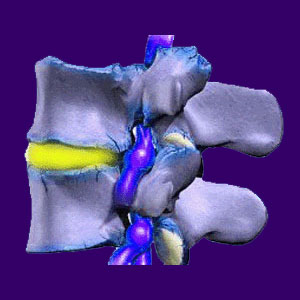
Cryoanalgesia for back pain is a minimally invasive surgical procedure which is much akin to other forms of nerve blocking techniques.
In this case, the nerve blocking technology consists of extreme cold introduced directly onto the nerve tissue via a small catheter. While there are many forms of cryotherapy used for treating a full range of health issues at skin level, this is one of the first uses for ultra cold nerve blocking inside the body. The procedure is also sometimes known as cryoneurotomy and is considered an alternative method of temporary denervation or nerve ablation therapy.
This essay explores the efficacy of cryoanalgesia in the dorsalgia treatment sector of medical science.
Cryoanalgesia for Back Pain Facts
Internal nerve cryotherapy is very similar to the plethora of minimally invasive back surgeries which utilize radiofrequency waves or heat waves to temporarily damage nerve fibers, thereby preventing pain massages from being transmitted on the treated nerve tissues.
Cryoneurotomy does not show any particular benefits over other types of nerve blocks and may even be less effective in some cases. Regardless, the technology is not commonly available and most spinal surgeons choose to use the more popular heat-based neurotomy and radiofrequency lesioning techniques.
In order to find out if there is any particular benefit to choosing heat, radiowave or cryotherapy for your specific diagnosed condition, it is advised to consult with a doctor who offers all variations of denervation treatment.
Cryoanalgesia Concerns
Although the cryotherapy procedure is generally safe and well tolerated, it is certainly not ideal as a back pain treatment. First off, the operation still does have some inherent risks, such as the possibility for infection, nerve damage or even spinal fluid leaks.
Some patients see little relief, while others only enjoy extremely temporary respite from their chronic pain. In the best circumstances, patients may see effective pain management for up to several months, but this procedure will do nothing to address the underlying causes of said pain, making it a purely symptomatic modality, much like a surgical bandage.
If there is a contraindicating reason to treat the actual causative condition with a more involved surgery, then the various forms of nerve ablation may be the best path to care. This is especially true compared to extended use of dangerous pain management drugs. However, if a minimally invasive surgery can be used to correct the underlying source of symptoms, then choosing the curative modality should always be the preferred course of treatment.
Cryoanalgesia for Back Pain Outcomes
The all around best application of any nerve ablation technique is for failed back surgery patients or those who simply can not achieve an accurate diagnosis of the source of there pain, but do enjoy definitive proof of which nerve fibers continually signal pain. In these cases, denervation is one of the best approaches to care, since the temporary procedures can test the waters for pain relief and if successful over multiple sessions, may provide all the evidence needed for permanent nerve burning or severing surgery to end the torturous expression for good.
If you need some type of temporary relief while looking for a true cure, then cryotherapy may be an option to consider. The challenge may be finding a doctor who recommends it and actually performs the procedure, since it is not commonly available in many facilities.
If you are adamant about using cryoneurotomy as a therapy option, you are sure to find a care provider if you search in the major medical markets. To learn more about this treatment, contact your local spinal surgeon or pain management specialist today.




